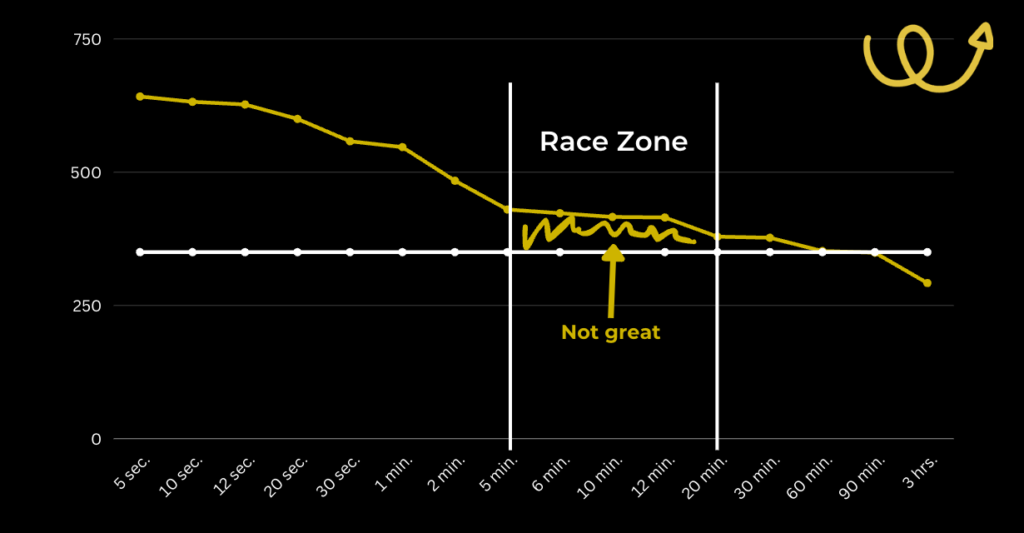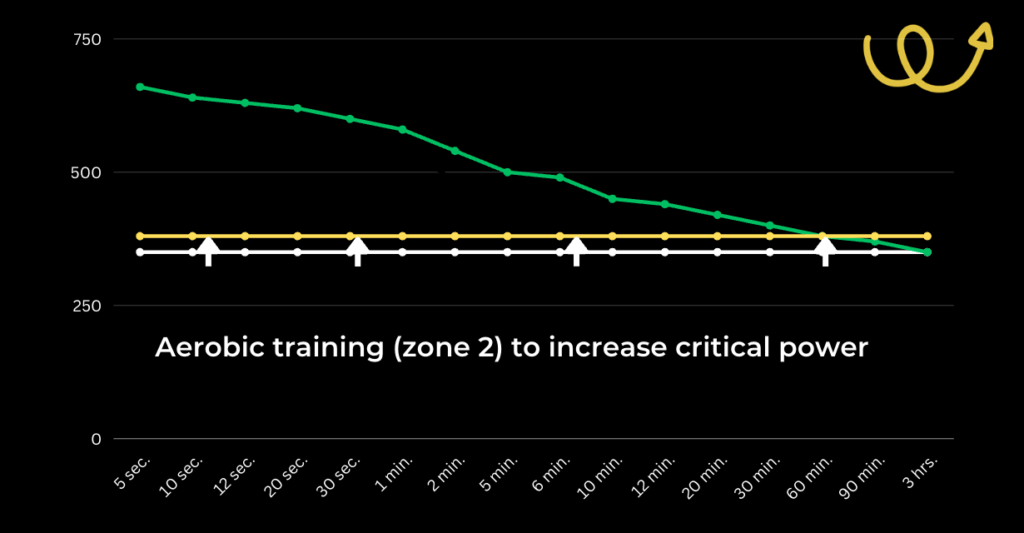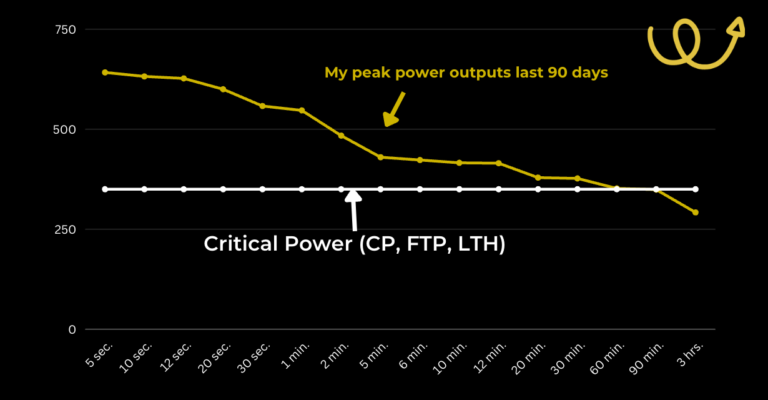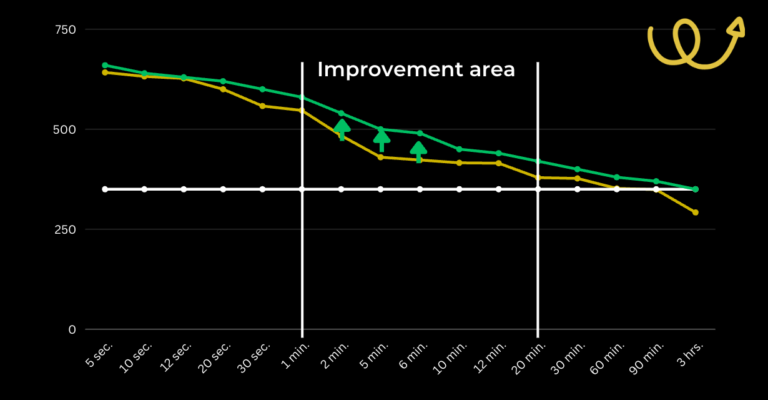Ultramarathoner to a Track Runner: Leveraging the Power Durance Curve
A few weeks back, I wrote about how I’m giving up on ultrarunning to pursue a new challenge – running fast.
What do I mean by “running fast”? My ultimate dream goal is to run under 15min for 5km. I ran 8:54 for 3km a couple of years ago, so I think (hope) I have the potential for a sub15 performance. I just need to hold the same pace for an extra 6min….
As I transition away from being an ultra-marathon runner to a track athlete, I find myself delving into the realm of anaerobic work capacity, critical power, and the power duration curve. Anaerobic work capacity refers to the physiological ability to perform high-intensity activities that heavily rely on anaerobic energy systems, specifically the phosphocreatine and glycolytic pathways, which generate energy without the need for oxygen. It plays a crucial role in shorter-duration races, such as track events, where explosive bursts of power and speed are paramount.
Critical power, also known as the anaerobic lactate threshold, represents the highest sustainable power output that can be maintained without experiencing excessive fatigue and a rapid accumulation of lactate in the muscles. While CP and the other analogous anaerobic thresholds are typically referenced as a 60min peak output, the actual duration you can maintain will vary greatly depending on your fitness and training. CP serves as a fundamental determinant of performance in events ranging from a few minutes to around an hour, where the balance between anaerobic and aerobic energy systems becomes crucial.
Analysing the Power Duration Curve
The power duration curve, a valuable tool in analysing performance capabilities, visually represents the relationship between power outputs and time durations. This curve displays an athlete’s power output at various durations, ranging from a few seconds to several minutes or even hours. The area under the curve represents the anaerobic capacity, reflecting the total amount of work that can be performed utilising anaerobic energy systems.
Utilising the Power Duration Curve
By examining the power duration curve, I can identify my strengths and weaknesses across different durations, enabling me to develop targeted training strategies to enhance my anaerobic work capacity. Increasing the area under the curve indicates an improvement in the capacity to generate and sustain high power outputs over time, a crucial factor in track running events that require rapid accelerations, speed maintenance, and efficient energy utilization.
Identifying Weaknesses and Demands
To address my anaerobic limitations, I closely examine my power duration curve, which provides insights into my power outputs across different time durations. Analyzing the curve reveals a plateau in the five to twenty-minute range, coinciding with the demands of track races. This signifies a significant opportunity for me to increase my power and subsequent speed within these durations. Additionally, I notice that my curve shows a need for improvement in power outputs within the sub-five-minute range, where I have not engaged in repetitive training.

Improving Anaerobic Work Capacity
My primary goal is to enhance my anaerobic work capacity, thereby increasing my ability to run above my threshold. To achieve this, I aim to elevate my peak powers across all durations. By pushing my numbers up, I anticipate substantial improvements in both rate of force production and sustained speed over time. This approach assumes that I keep my lactate threshold at its current level.
Understanding the significance of anaerobic work capacity, critical power, and the power duration curve allows me to approach my training with a scientific mindset, focusing on specific adaptations and training protocols that will maximize my potential for success on the track. Through deliberate and structured training, I aim to push the boundaries of my anaerobic capabilities, elevate my critical power, and optimize the power duration curve, ultimately propelling me towards improved performance and achieving my track running goals.
The Path Forward
In the initial phase of my six-month program, I focus on raising my critical power, or anaerobic lactate threshold, slightly above its present state. To do this, I devote a significant amount of training below this threshold, targeting my aerobic base and critical power. By establishing a stronger foundation, I can subsequently work on speed and anaerobic capacity training from a more resilient and faster baseline.

Conclusion
As I transition from ultra marathon running to track events, I recognise the importance of enhancing my anaerobic capacity. Through a targeted training approach, considering the demands of track races and identifying weaknesses using the power duration curve, I am confident in increasing my power outputs across various durations. By prioritising the development of my anaerobic work capacity, I am building a stronger platform for improved speed and performance. With dedication and strategic training, I am eager to witness significant advancements in my track running journey.
Need to learn more about running power?
I’ve got lots of blogs and a highly regarded course that TrainingPeaks is currently utilising for their coach education accreditation.
If you want to learn as you go, try my running power SMART training plans from just $39.
Keep up-to-date with all my latest content by signing up to my newsletter.





